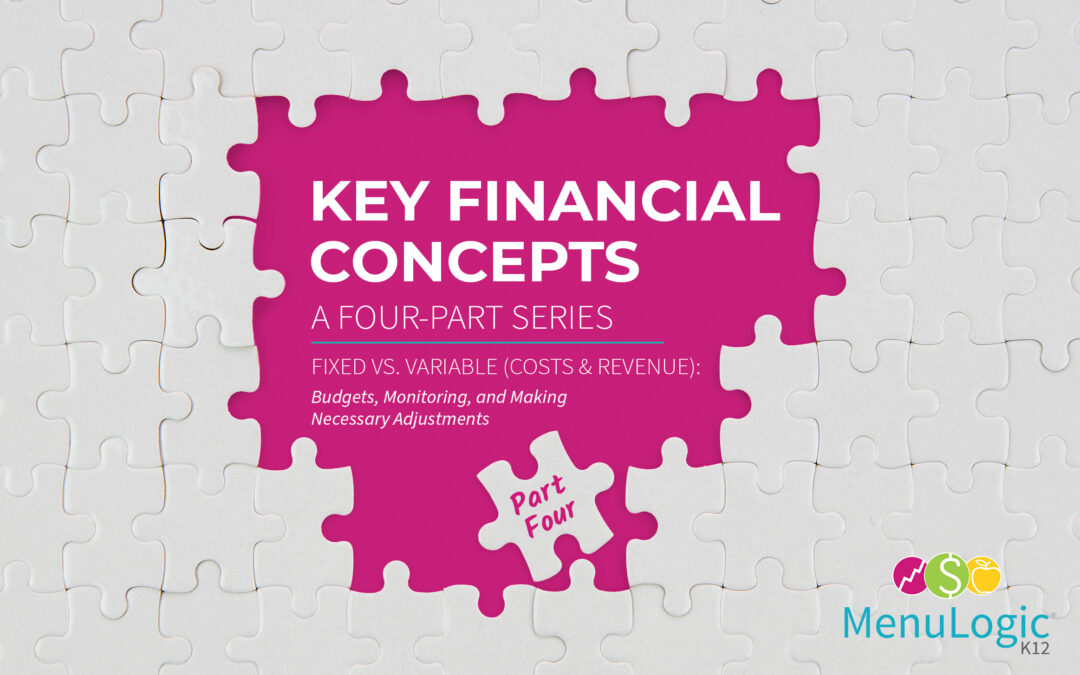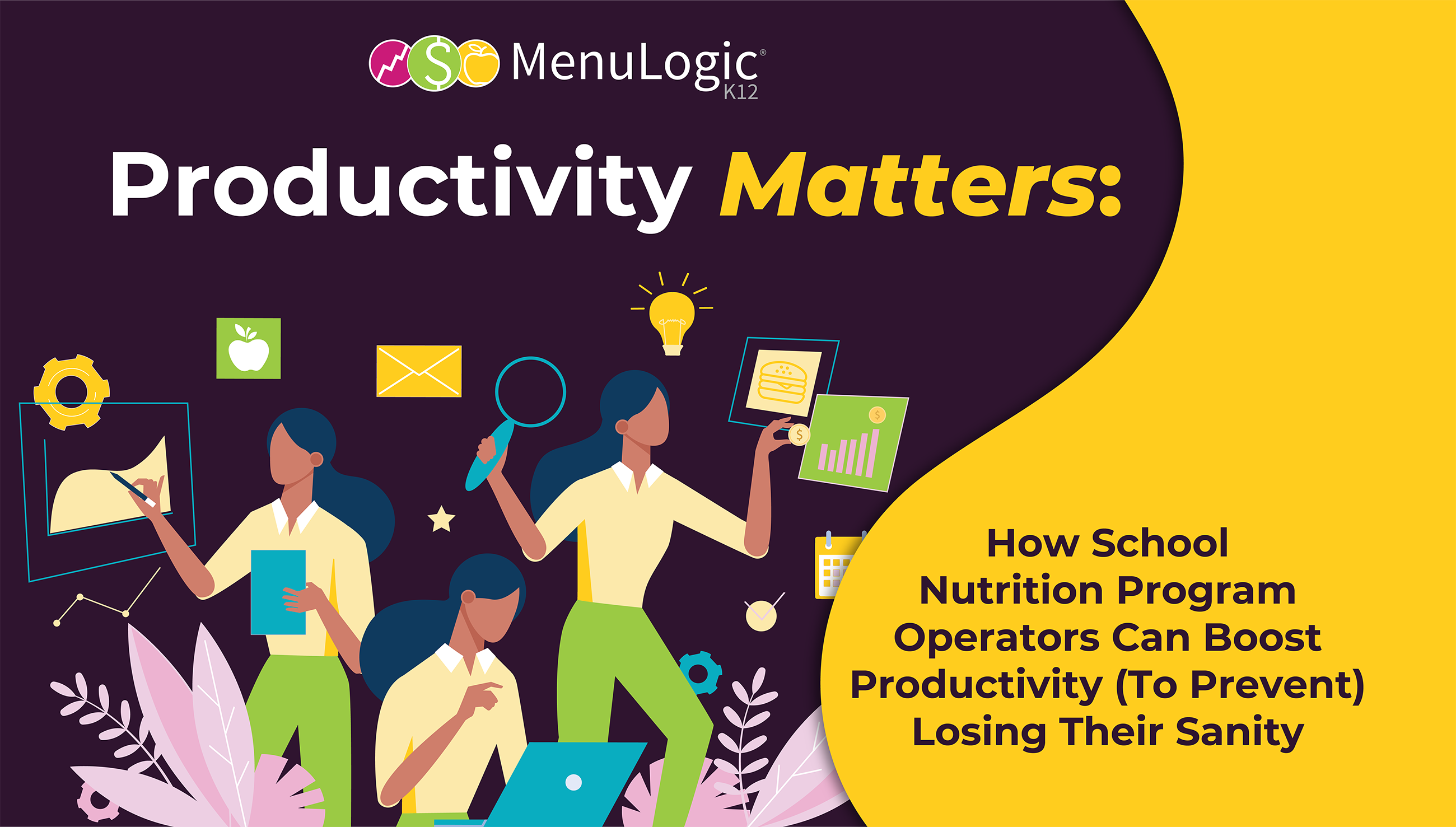Fixed vs. Variable (Costs and Revenue):
Budgets, Monitoring, and Making Necessary Adjustments
“The best way to predict your future is to create it.” – Abraham Lincoln
As a school nutrition director, I’ve experienced firsthand how important financial management is to running successful nutrition programs. In this final installment of our Key Financial Concepts series, I’m going to delve into a discussion about fixed versus variable costs and revenue. We’ll cover the main parts of a school nutrition program budget, key definitions, foundational concepts, and then tie all of that knowledge together to learn what should be considered in setting a budget, monitoring it and being prepared to pivot as necessary.
Let’s jump right in!

A school nutrition department’s budget is not that different from any other business (who sells goods and/or services) budget. The revenue we earn is a direct result of the number and type of meals and à la carte foods that we sell. The expenses that we incur are the costs necessary to earn that revenue. As you’ve likely learned from experience (like me and so many others in our field), this isn’t as easy as being given a pot of funds once a year and creating a budget to ensure expenses do not exceed revenue.
Before we move ahead, let’s go over some key definitions that will provide us with a firm foundation for understanding our budgets as well as how to monitor and adjust them as necessary.
Key Definitions
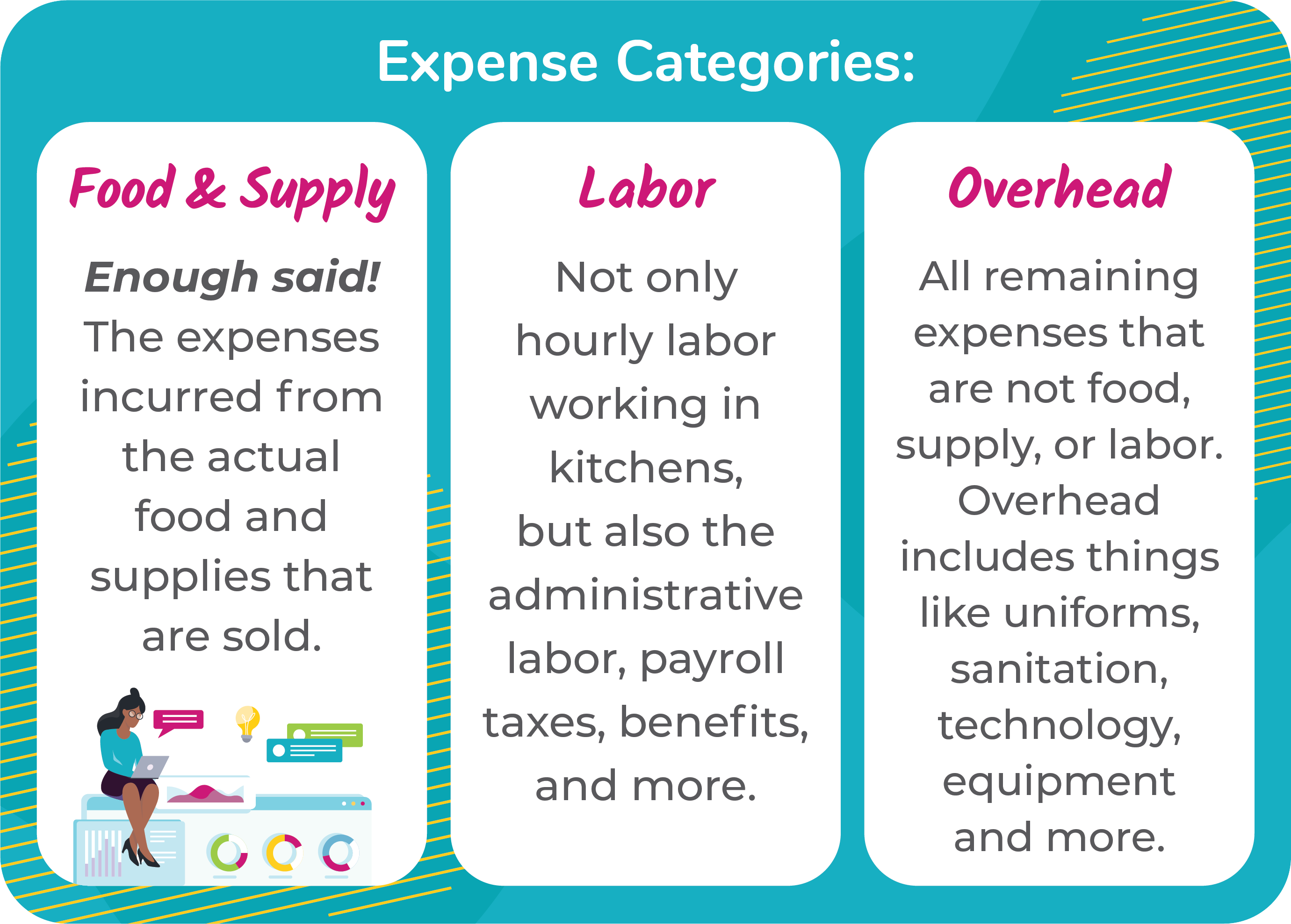
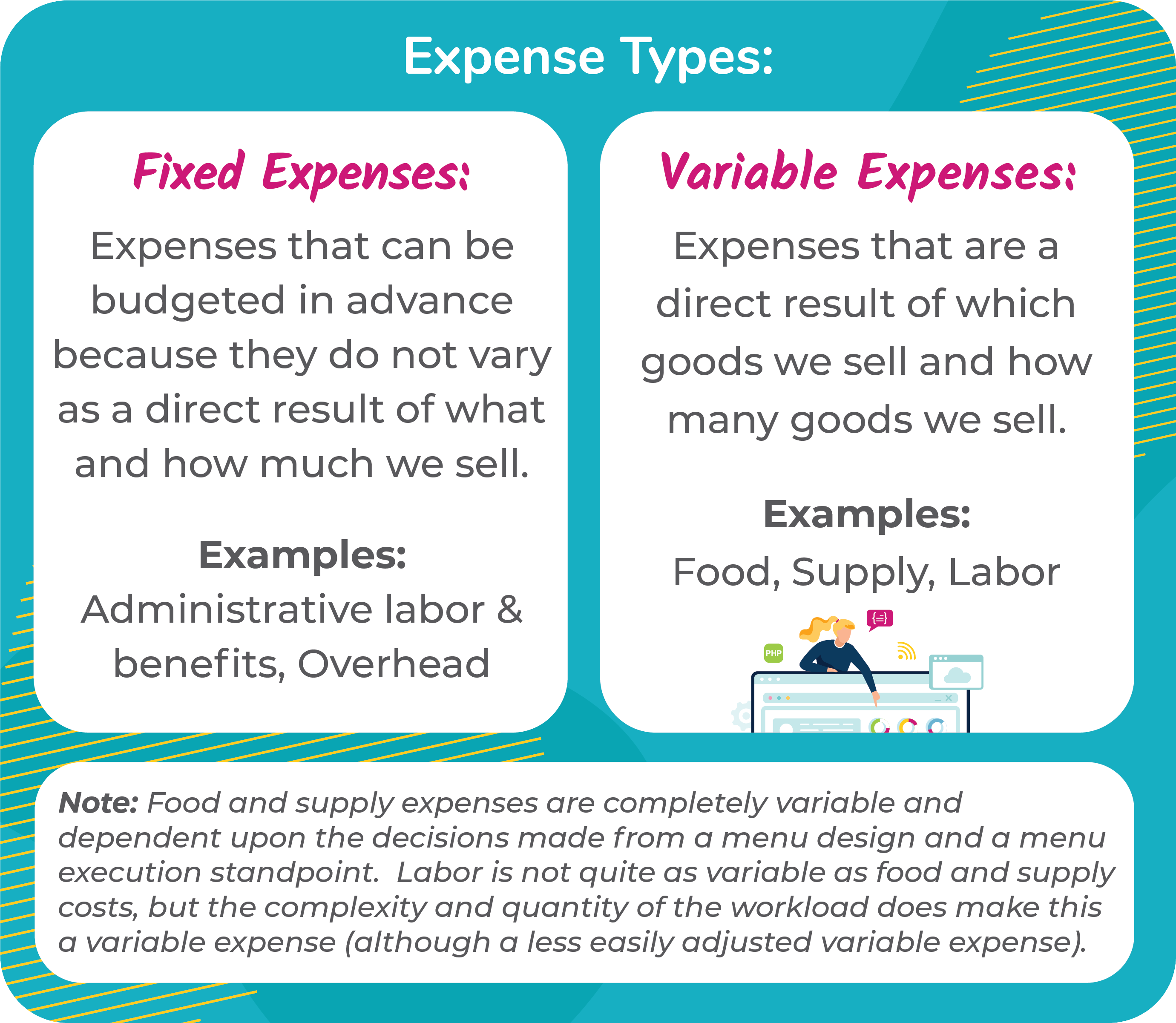
Why is understanding this important to running an effective school nutrition program?
Now, if you’re wondering why knowing about these concepts matters, (or if you knew they did but want to understand why), here’s what I’ve learned through my 15+ years as a school nutrition director:
1. If we want to affect our budget, we have to understand it. And, we have to understand what we can and cannot control (in addition to how to control what we can). Since we’re limited on time, spending time making decisions that will have a greater impact is a better approach than worrying about the small details.
2. It’s not something that we can just set as a low priority anymore. We have to pay attention to the decisions that we make. This means that we have to purposefully plan to set aside some of our limited time to do so – it’s that important.
How is revenue earned and how are expenses incurred?
We don’t earn our revenue or incur expenses in one lump sum. We earn and spend by selling hundreds of thousands of small units – meals and à la carte purchases that are each made up of even more hundreds of thousands of components (e.g. entrees, fruit, vegetable, milk and snacks). We can’t affect the sum unless we understand the parts that led to that sum. Once we understand those parts by considering revenue, variable expenses, and fixed expenses TOGETHER, we can make changes that will result in the sum being what we want it to be.
How exactly do small changes yield big results?
Let’s break down the menu with an analogy of building a house. The house starts with plans. There are certain requirements that must be met to ensure it doesn’t fall down, and other requirements that must be met to ensure it meets all the local laws and building regulations. The house plans also determine what the house will look like, how it will function, and more. Builder Company ABC wants to build houses with features and attributes that will entice buyers and generate revenue.

How does Builder Company ABC make a profit?
It starts with home model plans. These plans are used to build homes, which are made of building supplies, which are made of raw materials. There are many decisions to this process that can change the cost, the marketability, and the final profit or loss of Builder Company ABC. If Builder Company ABC wants to increase profit margin, they must either decrease cost, increase price, or both. If the market won’t bear a price increase, but they want to retain their profit margin, they must reduce cost. But that cost doesn’t come in one big decision – it comes through decreasing the cost of a home model, which means decreasing the cost of the supplies or labor of that home model.

Now let’s apply this to school nutrition.
The School Nutrition Program starts with the menu. The menu can be broken down to meal period (or production record), menu items, and ultimately, ingredients, just like Builder Company ABC’s home model plans.
For school nutrition programs, the end result of a profitable school nutrition program is ensuring that along the way, the sum of each of your serving opportunities (meal period) results in a profit. If we continually sell a menu (e.g. a home model) that generates no or less than desired profit, the end result will not be what we want.

Consider whether you made a profit or a loss on today’s breakfast or lunch production record at 1 school? What about the sum of all of those identical menus across schools?
Let’s tie together what we’ve learned and how the menu impacts the entire school nutrition program budget.
Profit is a result of ALL types (variable and fixed) revenue and expenses. The menu is our “plan” to produce the goods/services it is that we sell.
The information that we have readily available to us is the amount of revenue we earn in a given month or even day. We also know the total and general type of expenses that we incur for a month or a year. Now what?
What we don’t know is how much we earned and spent according to the menu, our “plan”. We don’t know which parts of the plan generated the revenue or incurred expenses that needed to be adjusted. We also don’t know how our other fixed expenses and variable labor costs can be applied to the menu.
So, let’s say you are working on figuring out whether a meal period is profitable or not. First, you must know the cost of the food and supplies used in order to generate the amount of revenue generated. Next, you have to allocate the cost of labor and overhead to that meal period. Wondering how?
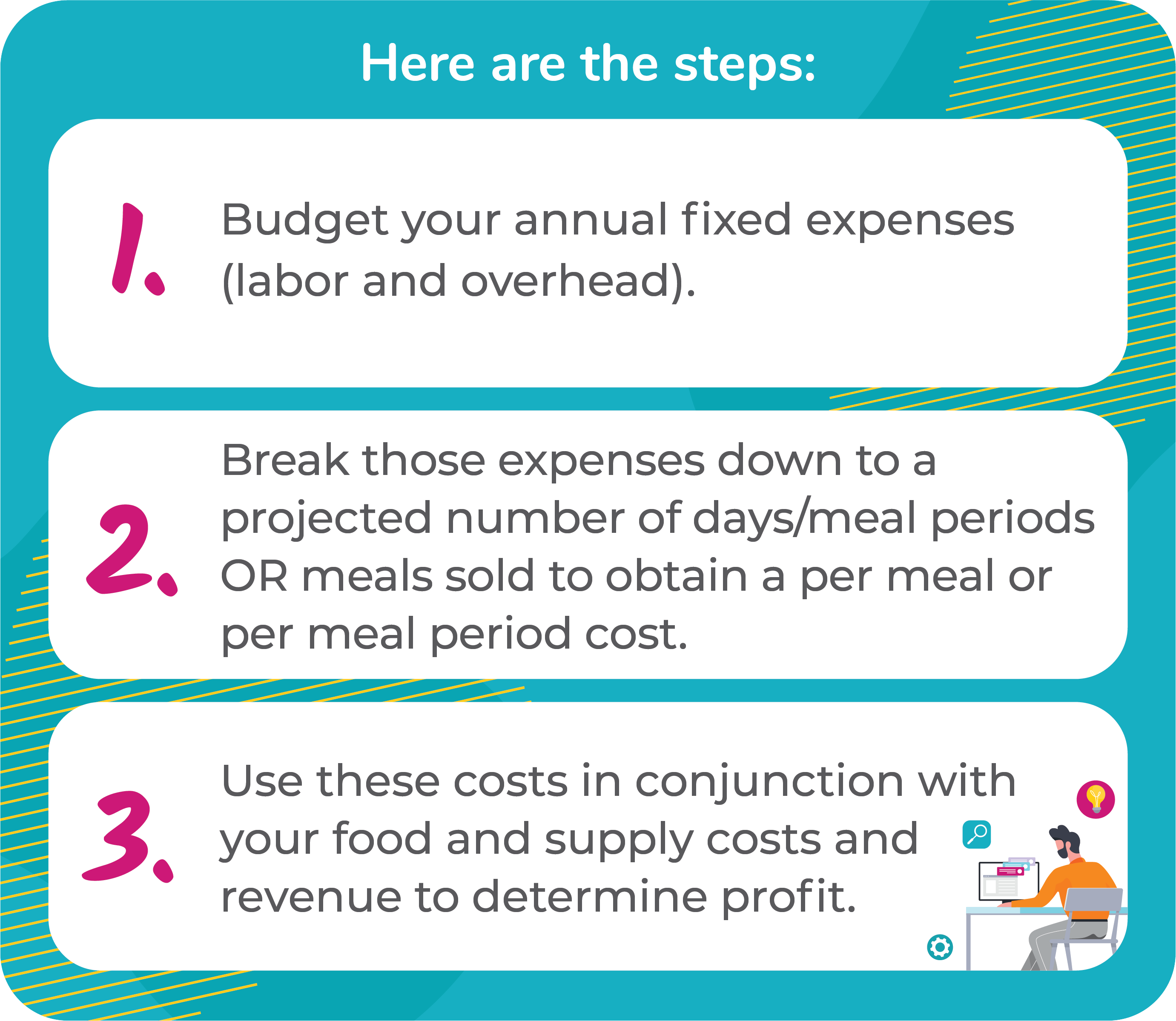
This stuff is really hard!
If you’re thinking that this stuff is really hard, I totally agree! I worked for years using spreadsheets and taking reports from POS or Menu Planning software. I worked really hard to make sense of it. I’ll give you a hint based on my 15+ years of experience – unfortunately, it’s not possible. There is way too much data to consider for the end result to be meaningful. By meaningful, I am referring to something you can actually use to make a difference. If all of this work results in something that you can’t even use to make a difference, then what’s the point of doing it at all?
Don’t feel bad! This isn’t a result of your lack of effort or your lack of mad excel skills. This is a data overload problem that requires unique software like MenuLogic K12 to pull it all together. That’s why we created MenuLogic K12 – because the information needed to build the school nutrition program we wanted was all sitting right there (well not right there, it was in lots of different places and systems). But I needed a key to unlock it – so that’s what we built. MenuLogic K12 is a system designed specifically for school nutrition programs to take all the pieces of the puzzle and put them together for you in a way that you can actually use… and quickly – because time is our most valuable asset.
I firmly believe that our future – even as it relates to budgets and financial success – is what we make of it. With MenuLogic K12 you will be able to understand specifically which menu decisions earned or spent the money in your monthly revenue and expense reports. MenuLogic K12 gives you the power to make a plan, put it in place and then monitor the plan and make adjustments along the way so that the outcome is what you want it to be. If you’re reading this article, I know that it’s because you’re a trailblazer and innovative thinker yourself. Continue stepping out of the past of the school nutrition industry and step into its future with MenuLogic K12.

